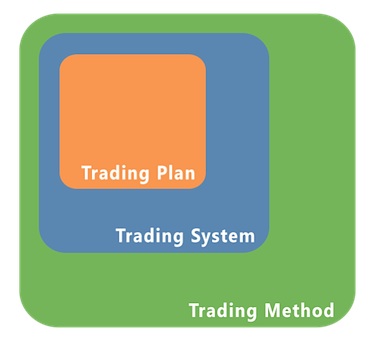
Discretionary Traders…
- Will attempt to trade the flow of information, like the news.
- They are trying to anticipate what the market will do.
- Discretionary traders are subjective; they read their own opinions and past experiences into the current market action.
- They trade what they want and have loose rules to govern their trading.
- Discretionary traders are usually emotionally engaged in their trading and taking their losses personally because their opinion was wrong and their ego is hurt.
- Discretionary traders are known to use many different indicators to trade at different times. Sometimes it may be macroeconomic indicators, chart patterns, or even macroeconomic news.
- They are looking for something in the market to base their entry off of. Their interpretation of a chart pattern, trend lines, news, volume, open option interest, or another objective reason for their trade. Discretionary traders many times trade for reasons that are hard to quantify into a subjective system.
Systematic Traders…
- Trend traders systematically trade the price flow.
- Trend traders are systematically participating in what the market is doing.
- Systematic traders are objective. They have no opinion about the market and are following what the market is actually doing, i.e. following the trend.
- System traders have few but very strict and defined rules to govern their entries and exits, risk management, and position size.
- Traders that use systems can be unemotional because when they lose it is simply that the market was not conducive to their system. They know that they will win over the long term.
- Systematic traders consistently use the same parameters for their entries and exits. They do not change them suddenly for emotional reasons.
- Trend traders can have positions in many markets using their technical system based on prices and trends so they do not need to be an expert on the fundamentals.
Some traders trade at their own discretion and others trade systematically. A trader could be 100% discretionary using their own opinions, beliefs, predictions, chart reading skills, and experience to enter and exit trades. Traders can also be a discretionary trader but trade inside the context of their own rules. There are also systematic traders that are almost completely mechanical in their trading decisions. They have a defined process for their trading entries, exits, and position sizing that takes out their own discretion.
There is a huge difference between traders that rely on their instincts and chart reading abilities and those who are pure system traders. Systematic trading removes the weakest element in a trading system, the trader themselves. A trading system will remove the fear, the greed, and the ego of the trader and replace them with signals and parameters for capturing trends. You can remove much of the emotional problems in trading by simply becoming systematic. No need to second guess yourself because your job is system implementation not making the right decisions to predict the next move. Your job changes to being an implementer of the system that you have created not a predictor of the next direction in price action. It is a much better job and should be a promotion for most traders from the daily stress of figuring out what to do.
A trend trader’s job is to create signals that tell them when to get in to a market because price action is signaling that price direction may have changed. When a new direction in price may be emerging your system should have signals to get you on the right side of the trend. Trend traders use systematic trading to gain an edge over other traders. Systematic traders use their discretion during their system building process but they are very mechanical in their actual trading once the system has been fully quantified.
While discretionary traders are busy trying to digest what fundamental news and information mean, systematic traders are taking the signals they are getting from actual price movement in the market. Systematic traders are not thinking and predicting what the market is going to do, they are reacting to what the majority is doing based on their predetermined system’s entry signals.
For the average trader being a mechanical systematic trader usually maximizes the chance of success in the markets, especially if you are using a historically tested profitable system. If you are removing the emotions and ego out of your trading and are controlling your risk of ruin with proper trade size and stop losses, then you have the probability of success on your side of joining the consistently profitable traders in the market.

What is a trading system?
A trading system is a set of rules that quantifies buy and sell signals, as demonstrated by successful backtesting on price history. A trading system is the specific kind of data used to execute the trading method, based on price action inside of a specific time frame. These signals are triggered by price action or quantified technical indicators. Trading systems have specific parameters relating to position sizing that manage risk and increase the probability of profitability over time. A trading system has at least eight quantifiable elements:
- Entry signal
- Exit signal
- Potential winning percentage
- Potential risk to reward ratio
- Position sizing parameters
- Expectations for frequency of trading opportunities
- Average expected annual return
- Maximum expected drawdown
A trading system quantifies the parameters for how you will execute your entries and exits based on your study of historical price action. The system tells you what to buy, when to buy it, how much to buy, what to do with it after you buy it, and how to manage your positions as the price action unfolds. The price action signals of trend traders systems is usually kept simple with entries being a breakout in the high or low price for a certain number of days and trailing that entry with a stop of a new low in a set number of days. Multiple moving average crossovers are also used to create entry and exit signals based on quantifiable price action. Trend trading systems can also have filters for volatility to adjust position sizing. Trend trading systems tend to keep position sizing small to avoid any big losses and be able to hold an entry through for the duration of a trend and not be shaken out due to small averse moves against the position.
Now what sort of trader do you want to be?
Trend trading tips:
- System trading can remove most of the emotions and ego from your trading experience.
- Your job as a trader changes from predicting the next move to taking signals.
- A trading system should keep you safe with position sizing parameters based on volatility.
- A trading system will tell you when to get in to a trade and when to get out.
- A trend trading system should make you money when the market trends.






There are no comments to display.
Create an account or sign in to comment
You need to be a member in order to leave a comment
Create an account
Sign up for a new account. It's easy and free!
Register a new account
Sign in
Already have an account? Sign in here.
Sign In Now